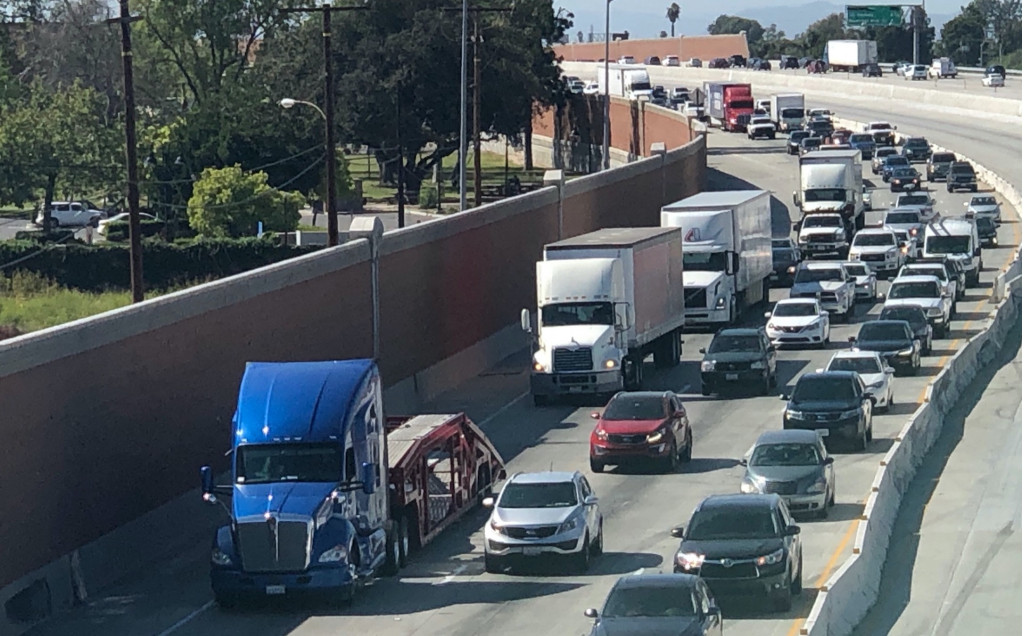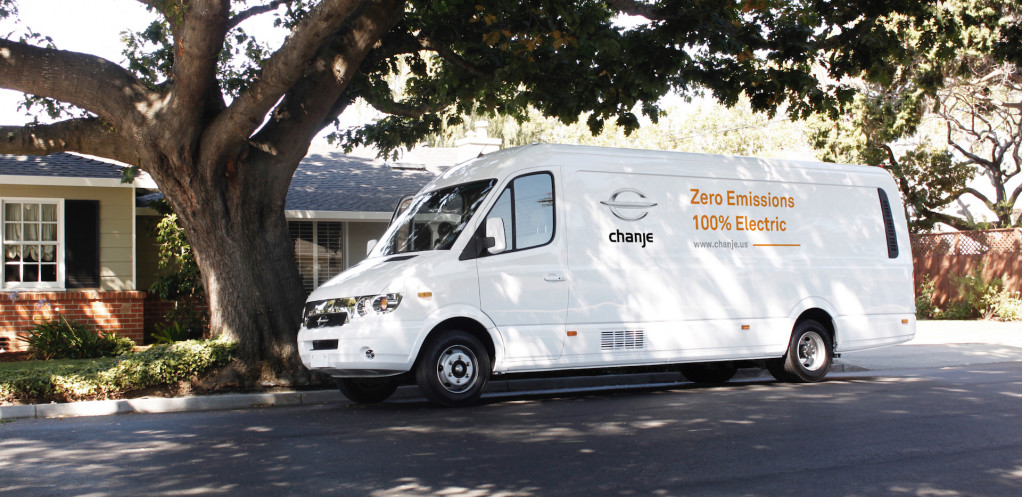Commercial electric trucks ranging from regional delivery vans to big rigs will have places to plug in when they’re transporting goods up and down the West Coast, according to a plan announced Wednesday by electric utilities serving the West Coast.
Spurred by the release of a comprehensive, 185-page “West Coast Clean Transit Corridor Initiative Study,” the plan proposes a backbone of 27 high-power DC fast chargers along the 1,300-mile Interstate-5 corridor from Mexico to Canada. It also suggests an additional 41 sites on connecting highways, including I-8, I-10, and I-80 in California, I-84 in Oregon, and I-90 in Washington, as well as some other LA-metro routes.

West Coast electric highway for trucks - 2020
At face value, the project sounds a lot like what took form ten years ago, before Tesla’s Supercharger network existed. Then, state transportation officials in Washington and Oregon allied with utilities and other interests to create a cohesive network of DC fast chargers that would enable weekend electric-car road trips.
That project became known as the West Coast Electric Highway and eventually spanned from Whistler, British Columbia, to the California-Mexico border, with charging stations set up every 25 to 50 miles along I-5, U.S. 101, and California Highway 99.
Compared to the passenger-vehicle project, the truck project is much more expensive and challenging—primarily because charging big, long-range semis during a short stop could take up to 100 times the power of the 50-kw fast chargers along the passenger vehicle route.
Truck charging could also take up a lot of real estate, and existing truck stops might not always be in the right place with respect to the electrical grid. Furthermore, moving to a much slower charger if the fast one’s down simply isn’t an option with drivers on the clock and goods to deliver on time.

I-5 corridor
The truck network’s stations would be installed by 2025, at roughly 50-mile intervals and outfitted for the charging needs of light- and medium-duty trucks. Later, 14 of those 27 stations would be upgraded to accommodate charging for electric big rigs by 2030.
Truck plazas on the new network would likely be capable of charging up to 10 trucks at a time, with the big-rig charging power they’re considering potentially ranging up to 5 megawatts. On a site basis they’re planning for up to 23.5 MW for some sites—which takes a lot of advance planning from utilities as well as very careful siting.
For reference, the highest-power charging station in Europe, claimed by Porsche earlier this year, with 18 350-kw fast-charge connectors for passenger vehicles, taps into 7 MW from all-renewable sources.
The total cost of the project is anticipated to be $850 million—much more than the equivalent electric highway for cars. Although the involved utilities are willing to absorb some of that, they expect both customers and federal, state, and local governments to step up to share the cost.
That's far more than the original West Coast Electric Highway that was funded in part by the U.S. Department of Energy. California alone pitched in $100 million toward highway fast-chargers as part of the network.
To estimate the needs of the network, the study looked at two time frames: 2025 and 2030. For the 2025 scenario, it considered primarily medium-duty trucks based on battery-size projections. Assuming each vehicle would need a charging time that was roughly the equivalent of a diesel vehicle, the study suggested a minimum 350-kw capability for each charge connector.

Big rigs in traffic
Moving to the heavy-duty big rigs, the power needs “increase pretty dramatically,” according to Eric Seilo, the senior manager for e-mobility strategy at Southern California Edison (SCE). The 14 stations to be upgraded were suggested based on the longer range (up to 325 miles per charge) of these trucks and assuming about a 2-MW charger for each vehicle up to ten vehicles.
The study is intended to take a first look at what form the technology might take, according to Seilo, who helped determine the methodology. “There hasn’t been a standard established for heavy duty or really high speed truck charging,” he said, noting that the new industry standard for high-power truck charging is expected to land somewhere between one megawatt and five megawatts per port range.
The study assumed that by the year 2030, 8% of medium- and heavy-duty trucks in California, Oregon, and Washington will be electric. At present, there are a total of about 1.7 million trucks in the affected categories in the three states, which are projected to make up about 11% of national sales for medium- and heavy-duty trucks over the next decade.
According to the project, 40% of the goods that enter the U.S. travel through the ports of Los Angeles or Long Beach, so it’s also vital for the economy.
A massive fleet survey was used to help guide some of these decisions. It included responses from all three West Coast states, transit agencies, school districts, food and beverage distribution, construction, airport shuttle services, electric utilities, and many more.

Chanje medium-duty electric truck
Increasingly, utilities are recognizing the need to step up and tweak the plans based on what all those users actually need.
“It’s really important that we all listen to our customers as well, because the deployment of these new trucks will be slowed if we’re not allowing them to charge when they need to charge in order to process further on their routes,” said Bill Boyce, the manager for electric transportation research and development for the Sacramento Municipal Utility District (SMUD). “It’s important that as utilities we have a critical role to play in providing these high-level power requirements.”
Although the project is by no means shovel-ready, the timing could prove just right. The CARB is expected to vote this week on a program that will result in about 300,000 zero-emission trucks being put to use by 2035. While the fine details of a federal transportation infrastructure bill are yet to be reconciled at the federal level, some excitement and support from truckmakers or freight-hauling companies could make this happen sooner rather than later.
